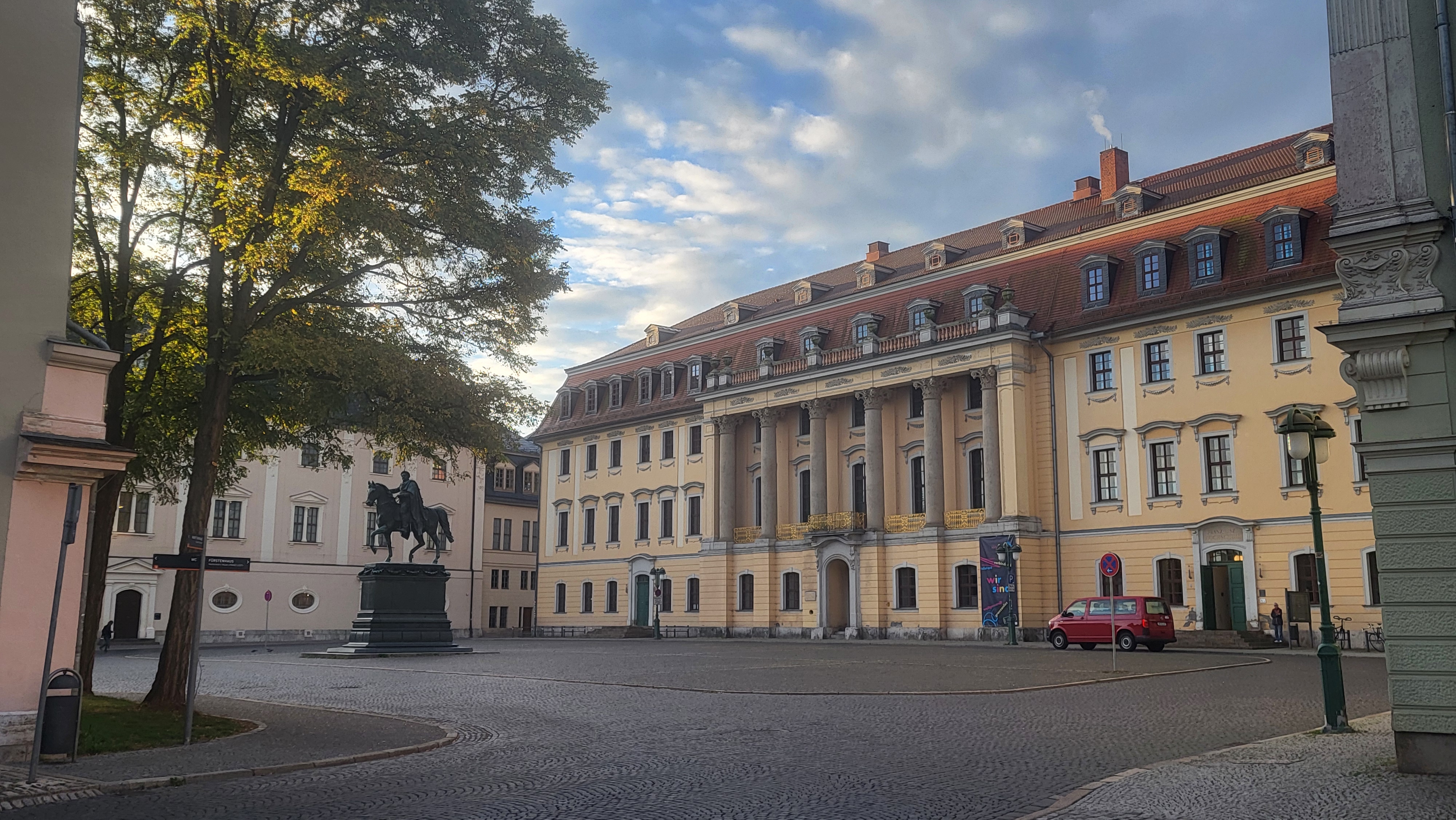Tradition since 1872
Born from Franz Liszt's vision
The idea for a Music university in Weimar came from none other than Franz Liszt. As early as 1835, he formulated ideas for the foundation of "progressive schools of music". When he endeavoured to establish such a conservatory as court conductor in Weimar between 1849 and 1853, this ultimately failed.
It was not until 1872 that Liszt's basic idea was realised in a completely different, grassroots manner. Under the direction of church musician Carl Müllerhartung, the first orchestra school in Germany, a vocational school for 14 to 18-year-old young men, was established with very close ties to the court orchestra - all teachers came from there on a part-time basis. In 1876, young women of the same age were trained as piano and singing teachers and a pre-school for 10 to 14-year-old boys and girls was added.
It was not until the 1920s that the beginnings of a more extensive virtuoso training programme were given greater weight, which ultimately led to the State Music School being renamed the State University of Music in 1930. Stagnating during the Nazi era (around 1939 it was the smallest German Music university), it reached its usual profile and size after 1946. It has borne the name of Franz Liszt since 1956. However, it was not until the 1990s that adequate staffing and facilities were realised.
Historic ambience
In the 1990s, the university locations scattered across the city were merged into four historically significant centres, all of which were completely renovated and equipped for contemporary music teaching.
The university's main building, the so-called Fürstenhaus on Platz der Demokratie, is located in the immediate vicinity of Weimar's market square. Built in the 1770s, this prestigious building houses the string players, pianists, the Department of Early Music, the studio for electro-acoustic music, the recording studio and the library.
The monastery building Am Palais, where the school and church musicians have their classrooms, is also located in the city centre. There is a beautiful view over the city on the River Ilm from the imposing University Centre on the Horn, which houses the Jazz, Woodwind and Brass, Elementary Music Education/Rhythmics, Musicology and Arts Management departments as well as the Thuringian Regional Music Archive with its valuable collections.
Modern facilities
Behind the time-honoured walls are modern rooms that are fully tailored to the needs of their users: The modern ballroom in the Fürstenhaus and the ensemble rehearsal rooms in the university centre on the Horn offer flexibly adjustable acoustics. The soundproofing of the classrooms in the University Centre in particular sets standards.
Finally, the fourth location is certainly the most picturesque: the singers, guitarists and accordionists practise and learn in the Kavaliershäuser of the Belvedere Palace Landscape Park at the gates of the city.
This park is also home to the Music High School Schloss Belvedere, the university's Centre for the Highly Gifted, whose students receive their extensive music lessons exclusively from professors and lecturers at the Weimar Music University: an ideal prerequisite for future music studies.
An essential part of teaching is public performance: the university organises more than 300 concerts and performances per year, as well as the traditional Weimar Master Classes and four international competitions for piano, violin and chamber music for more than 60 years.
